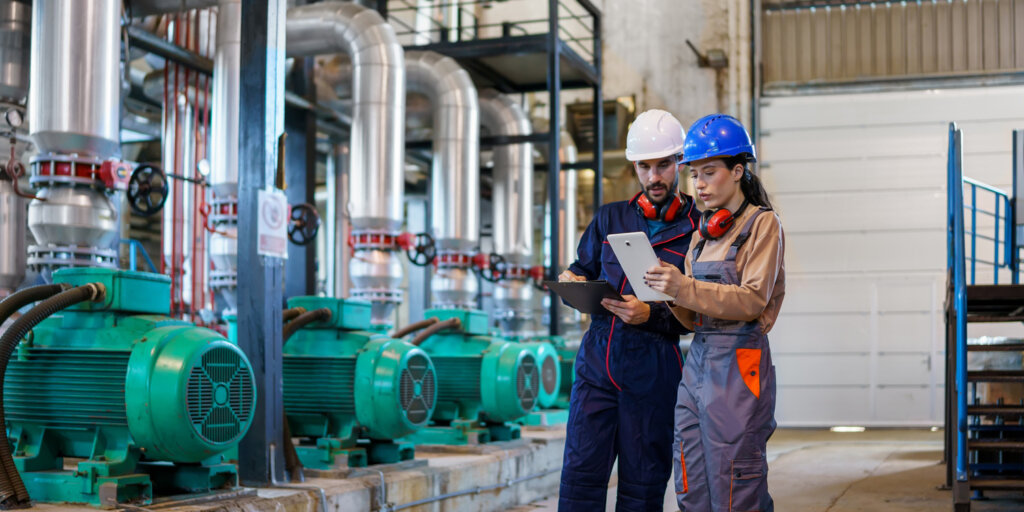Home » Harnessing Waste Heat to Address Our Expanding Energy Needs
Harnessing Waste Heat to Address Our Expanding Energy Needs

Professor Majid Bahrami from Simon Fraser University sheds light on the significant potential of harnessing waste heat, an energy source often overlooked in discussions about sustainable energy systems. With the increasing electrification of transportation, heating systems, and data centers, coupled with population growth and economic expansion, there is a growing demand for electrical energy. Bahrami emphasizes the urgent need to utilize the vast amounts of heat generated daily, much of which currently goes to waste.
Globally, it is estimated that about 3,100 thermal terawatt hours of waste heat remains untapped, representing a potential saving of $200 billion annually. Bahrami and his research team aim to harness this waste heat to enhance energy efficiency in various settings, including buildings, district energy systems, greenhouses, and industrial sectors. Their focus includes not only lowering costs and emissions but also creating reliable sources of renewable energy.
One key technology being explored is the sorption heat transformer, which can convert low-grade waste heat (below 90 degrees Celsius) into usable energy for heating or cooling. This technology functions like a thermal battery, capable of storing waste heat with minimal loss, and could feed heating and cooling directly into district energy networks via pipelines, removing the need for electricity.
Bahrami notes that the optimal temperature for these transformers is currently between 80 and 90 degrees Celsius, but efforts are being made to lower this to 70 degrees Celsius or below, which would expand the technology's applicability. By utilizing waste heat, industries can improve their operational efficiency while contributing to decarbonization efforts. This approach provides a solution to existing infrastructure challenges, allowing resources to be maximized before costly upgrades to electrical grids are needed.
Heavy industries generating waste heat can particularly benefit from these technologies. By converting unused heat into clean energy, they could power their operations and even provide surplus energy back into local district systems, creating a dual benefit of energy savings and revenue.
Municipalities, too, stand to gain from these advancements. In areas like Vancouver, which largely relies on natural gas for building energy, addressing building-related emissions is essential to reduce greenhouse gas footprints. Collaboration with cities like Burnaby, where high-grade heat from waste incineration currently goes unused, has shown promise. This excess energy could sufficiently heat entire municipalities and support district energy systems.
Despite these advances, Bahrami acknowledges existing limitations, noting that the technology is still in the prototype phase and needs to be scaled up for commercial viability. There is an ongoing effort to improve efficiency, reduce costs, and explore new materials and nanotechnology that can enhance the functionality of heat exchangers and reactors used in these systems.
Overall, as energy efficiency measures evolve, Bahrami emphasizes the importance of integrating multiple energy avenues and maintaining a collaborative relationship between government, industry, and academic institutions. He envisions a future where innovative solutions can effectively meet the energy demand derived from the still-untapped potential of waste heat, emphasizing the need for a holistic view of the energy landscape to embrace the myriad possibilities that lie ahead for sustainable practices.
MaRS Discovery District
https://www.marsdd.com/
MaRS is the world's largest urban innovation hub in Toronto that supports startups in the health, cleantech, fintech, and enterprise sectors. When MaRS opened in 2005 this concept of urban innovation was an untested theory. Today, it’s reshaping cities around the world. MaRS has been at the forefront of a wave of change that extends from Melbourne to Amsterdam and runs through San Francisco, London, Medellín, Los Angeles, Paris and New York. These global cities are now striving to create what we have in Toronto: a dense innovation district that co-locates universities, startups, corporates and investors. In this increasingly competitive landscape, scale matters more than ever – the best talent is attracted to the brightest innovation hotspots.


